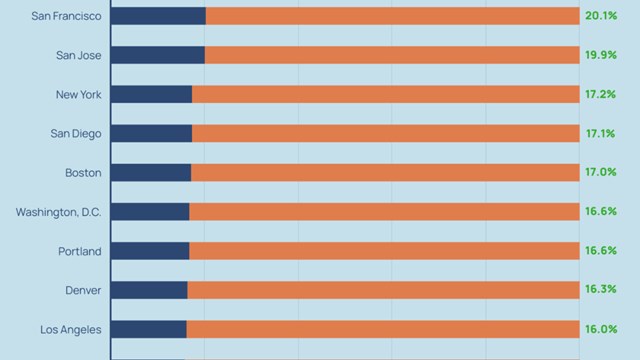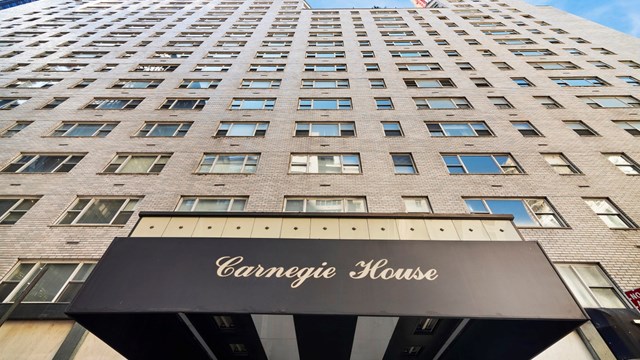New Yorkers certainly wouldn't want to spend their summer being stuck in a crowded elevator or a hot, steamy subway car with no lights or air conditioning, especially when the temperature climbs to around 100 degrees. That is not a pleasant situation to say the least. However, some experts are predicting that New York City may face those dire consequences this summer as California did in 2000 when power supply problems forced the implementation of rolling blackouts disrupting workplace productivity and daily lives.
According to Greg Carlson, executive director of the Federation of New York Housing Cooperatives and Condominiums (FNYHC), such blackouts are a real possibility this year unless residential buildings and their occupants undertake specific measures to conserve energy. Carlson and the Federation are urging their membership to consider submetering and implementation of a comprehensive energy management (CEM) program.
Carlson, who lives in Queens, intends to use his own master metered co-op building as a test case for a real-time advanced metering program. This allows residential users to gather critical information about usage patterns so that they can shift to using appliances at off-peak times or during cheaper use time slots as a cost-saving measure. Residential buildings peak later than office buildings so usage patterns greatly differ, says Carlson. In this way, a shareholder or unit owner will see current usage patterns and project cost savings based on altering their usage of lights, air conditioning and other appliances.
"Instead of doing your wash at 7 [o'clock], do it later in the evening and you'll be able to save money and there won't be any upwards surge of our building's maintenance," says Carlson.
Carlson suggests that residents turn off lights when not home or when leaving a room, turning off non-essential appliances and running heavy energy-consuming products at off-peak hours. "You could easily run your dishwasher at 11 p.m. Of course, you would be a lot more likely to alter your habits if it cost more to wash your dishes at 5 p.m. than at 11 p.m.," Carlson says in a report Beyond Submetering sponsored by the New York State Energy Research and Development Authority (NYSERDA), and co-authored by Lewis Kwit, president of Energy Investment Systems Inc., and J. Reyes Montblanc, president of The HDFC Council.
"The benefit is that you'll be able to understand just where the power is going," Carlson says.
New metering and billing technologies, claims Carlson, permits co-ops to monitor those peak times when demand is higher and prices on the open market are more expensive.
Another saving option, Carlson says, is having load curtailment devices installed along with the submeters. This device, says Kwit, a very new technology that is being used now in single-family homes in Florida, permits an automatic shutoff if the user reaches a peak load. "Curtailment is the next new thing in energy conservation. Curtailment gives you the opportunity to exercise discretion without doing anything," Kwit says. A electrical signal via a relay through the building, the meter and the power line eventually ends up in a device installed in the apartment that would act to break a circuit of whatever appliance you wished to shut off at a certain time, like a remote-controlled timer you plug into an outlet, according to Kwit.
For example, if the air conditioning is running during the day when the resident is not at home, the automatic shutoff feature could be set up to kick in, unless it was disabled by a user who preferred to keep the appliance running, adds Carlson. Load curtailment devices also can be programmed to respond to outside signals from state utility regulators, in the event that city power supplies were low and there was danger of a blackout, Kwit says. He is working with state officials to establish a pilot program to test these devices in some rent-regulated buildings and a co-op on the Upper West Side.
A second option for a submetered building is installing interval meters, which are meters that measure usage in time increments and then bill accordingly. Only a submetered building can purchase its own power and install meters that measure usage in time increments. Con Edison doesn't install individual meters that have that capability, according to Kwit.
"A cooperative can enhance opportunities for residents to save by billing based on time of use. New York City residents use 40 percent more electricity today than 20 years ago. Much of this usage is discretionary and could take place at other times. If electric charges corresponded to actual prices in the wholesale market, residents could consider the cost when scheduling activities such as dishwashing, ironing clothes and automatic oven cleaning," says Kwit.
Among residential buildings, there are basically three ways that electricity is distributed, Kwit explains. Your co-op or condo is either direct or individually metered and residents are billed directly by the utility company, such as Con Edison; your building is master-metered without individual apartment meters; or it is submetered with a utility-owned master meter and individual meters for the apartments, says Kwit. With master metering, the electric costs for the apartments, common areas and any retail uses like a store, a laundry room or a garage, are distributed among the shareholders based on shares, square footage, or other criteria. The master metered building receives a bill at the bulk residential utility rate and users are not billed by actual usage, according to Kwit. Electricity costs are included among the maintenance charges that shareholders pay.
Both direct metered and master metered buildings can be submetered. In a direct metered building, submetering is the installation of a utility-owned building master meter and the replacement of the individual utility-owned meters with submeters that are owned by the building. In a master metered building, the utility will continue to read the master meter and bill the building at the bulk rate. The owners of the individual apartments will not receive a separate utility bill, but will be billed for usage by management. Submetered cooperatives that bill shareholders at slightly higher rates during the building's peak usage, can then encourage them to shift their electric-powered activities resulting in lower demand costs for the entire building.
Submetering is a cost-effective method of providing electricity, according to Jerry Fund, president of Computer Metering Corp. in Manhattan. Fund, whose company was formed in 1979, installs and designs submeters in addition to conducting the entire billing operation. Electro-mechanical meters, such as those that are used by a utility company require a meter reader; electronic metering is all done remotely via a computer line and a modem. The meters can be read, reset and serviced entirely by computer or even by radio telecommunication, Fund says.
The road to submetering was fraught with barriers and faced much opposition from the public, according to Facilitating Submetering Implementation, a report that NYSERDA issued in 1996. The New York State Public Service Commission (PSC) barred submetering in residential housing back in 1951 to prevent abuses by landlords that had been overcharging rental tenants for their electricity. In 1973, the threat of a worldwide oil embargo forced New York State to look at ways to reduce building costs in properties under state and city jurisdiction. Secondly, owners of rental properties and managers of housing co-ops and condominiums sought ways to transfer rising electric costs to tenants, renters, shareholders and unit owners. In light of this, in 1979 the PSC restored the right of buildings to submeter. NYSERDA, the New York State Division of Housing and Community Renewal (DHCR) and Con Edison subsequently initiated several demonstration projects over the years, and similar programs are still taking place today.
Those projects, says the report, concluded that submetering saves energy and is cost-efficient. Based on the findings of a Con Edison and NYSERDA-sponsored Residential Submetering Program, submetering resulted in an annual average savings of ten to 23 percent of a typical apartment's consumption. Also, approximately 60 to 70 percent of the residents living in a submetered building benefited by lower electric bills because shareholders were better able to monitor their own usage. And building owners, too, were able to better predict and control their own costs while reducing their actual operating expenses.
Consumption levels varied by building and apartment size but the cost savings were apparent, according to NYSERDA's report. In 1996, the PSC made it easier for co-ops and condos to gain approval. In order to submeter, approval had to be obtained from a majority of shareholders in a master metered building and 70 percent of the shareholders in a direct metered building. Gaining approval has proved difficult in many cases, and because of its history of opposition, people need to be convinced of the benefits, says Fund. And installing submetering in certain buildings, like the Upper West Side's Dakota Apartments, for example, is technically impossible because of construction or configuration constraints, Fund says.
In a master metered building, electric bills remain the same even when an individual attempts to change their consumption habits or alter the times that they use electricity. Fund says, "if they turn their air conditioning on in April or May, they can leave it on until September. They never turn it off, they go away all weekend and they waste tremendous amounts of electricity," says Fund.
In some sense, it's a question of fairness towards being billed for the electricity that you are using, Fund says. "Sometimes what happens is that the building will take the bill and they'll whack it up by the square footage that your apartment is, or by the number of shares that you own in the co-op, which is crazy, because it doesn't have any effect on the use of electricity because you may have two or three kids in your apartment and the people down the hall have none. And as a matter of fact, they may be snowbirds "“ so from the end of October, November, December, January, and into February "“ they may be in Florida, but they're still paying the same electricity but they're not using any. And yet the people that are there with two or three kids are using the electricity like crazy."
Submetering is a practical solution, claims Fund, because those who use extra electric power "“ for example, running an air conditioner 24-hours a day or operating a frost-free refrigerator, a washer/dryer or even, a wine cooler or a hot tub "“ pay for the amount that they use. Cost savings vary, but, for example, Fund estimates that residents of one 350-unit co-op that he submetered saved over $45,000 in the first year.
More and more buildings are going to submetering, says Bob Friess, of American Metering and Planning Services, Inc. (AMPS), of Smithtown, Long Island, because costs are more equitably distributed among the shareholders and unit owners that live in the building.
"It's a known fact that when people pay for power, they use less power," asserts Friess. "People who don't pay for energy tend to abuse it."
According to Friess, whose company has been in the submetering business since 1990, cost savings varies but submetered buildings, which are charged the bulk rate by Con Edison can get their energy about 20 to 25 percent cheaper. Con Edison delivers the power but any building can hire an energy service company or ESCO, such as Amerida Hess or Keyspan Energy, to supply the power as a third party provider.
There are multiple benefits to submeter, not including the incentives and tax rebates offered by groups such as NYSERDA, says Jim Leonard, vice president of national submeter company, E-Mon, of Langhorne, Pa. Whenever a building goes from master metering to submetering, Leonard says, 66 percent of the residents will wind up paying the same or less in the common area maintenance charges that they now pay. Subsequently, the remainder will pay more "“ it might be only $1 more but their costs will be higher, says Leonard. However, the higher rate payers are generally the ones using more electricity. It is typically thought that 70 percent of the shareholders use 50 percent of the power in a master metered building; with the remaining 30 percent using the rest. The cost savings after conversion is dependent on a number of factors, says Leonard. A major variable is whether the building uses gas or electric heat and if gas or electric ovens or washer/dryers are installed in the apartments, he says.
To encourage conservation, New York State now requires that any new construction or buildings undergoing any renovation be wired to permit individual submeters to be installed, but says Leonard, enforcement is sometimes lacking and there is no pressure on building owners to persuade them to convert.
The New York State Independent System Operator (NYISO), which controls and monitors the state's electric power grid, recently put out Power Alert II, a report affirming earlier findings that an energy crisis for New York City looms on the horizon. If the demand for energy continues to grow and outpaces supply or if a summer heat wave overloads the existing energy grid, New York City could face rolling blackouts similar to that which plagued the state of California in 2000. NYISO reports that New York City barely avoided a blackout situation during an August heat wave last summer when it imposed a five percent voltage reduction to conserve dwindling supplies. Had another two percent reduction been required, NYISO would have considered rolling blackouts to conserve power. In the past when the city suffered major blackouts, as it did in 1965 and 1977, the cause was transmission problems not an imposed restriction. From August 7-9, 2001, New York's electrical grid experienced record demand culminating on August 9th with a peak hourly demand of 30,983 megawatts, when the temperature rose to 103 degrees.
The effects of the September 11th terrorist attack on existing power supplies should be negligible, according to NYISO. Power Alert II notes that even accounting for losses from September 11th, the state will require an additional capacity of 7,100 megawatts by 2005; about 3,000 megawatts of which is needed by New York City. Between 1995 and 2001 in New York, statewide demand for electricity rose by 3,280 megawatts, while generating capacity increased by only 1,720 megawatts, according to the report.
"Some experts argue that the collapse of the World Trade Center will obviate the need for new supplies. In truth, the trade center accounted for only one-tenth of one percent of summertime peak power needs. A series of three 90-degree days could easily wipe out the modest gain and place the system in jeopardy," claims the Power Alert II report.
Fund agrees with NYISO's findings. "I absolutely said it last year. If you remember last year was cool and we just sneaked through. There were a couple of times when we did have a little bit of a rolling blackout but as I said it was cold. But now if we get an extended period of hot weather, I guarantee you we're going to have a problem because we haven't put any new generators into play yet."
According to NYSERDA, the state of New York offers several incentives or tax rebate programs to persuade building owners and managers to adopt energy saving measures. NYSERDA's CEM program offers incentives to fund a portion of the installation costs of advanced metering systems in single-family and multi-family dwellings. Incentives offering from 50 percent to 100 percent of the project cost per residential unit are available to support the installation of energy management and advanced metering systems in any sized residential rental, co-op or condo building. If the cost per apartment is $500 or greater, NYSERDA will pay 50 percent of the cost; from $400-$499 per apartment, 55 percent; $300-$399 per apartment, 60 percent; $200-$299 per apartment, 65 percent; and under $200 per apartment, 100 percent. NYSERDA will also pay $2,000 towards the cost of installing advanced master meters. Low income properties are eligible for a even higher percentage of the New York Energy Smart incentive grants listed above. For information on the CEM program and the Energy Smart grants, contact NYSERDA toll free at 1-866-NYSERDA. Their regional office can be reached by calling 212-971-5342. For further information on submetering, visit
Under this formula, for example, if a 500-unit, non low-income multi-family building applies for CEM funding, and the total contractor's cost to install an advanced submetering system is $225,000 or $450 per apartment, the building would be eligible for a 55 percent grant. That is equivalent to $123,750 of the total project cost, which after verification that the project was completed as specified, would be disbursed by NYSERDA in the form of a rebate check.







Comments
Leave a Comment